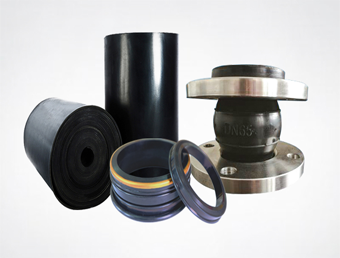Mixed Use of Nitrile Rubber and EPDM: Discussion on Alkali Resistance
2024-07-29 10:03:26
In the modern industrial field, the diversity and durability of rubber materials make them play an important role in many applications. Nitrile rubber (NBR) and EPDM are two rubber materials widely used in the automotive, electronics, construction and other industries. This article will explore their mixed use and alkali resistance in detail to provide readers with a comprehensive understanding.
Characteristics of Nitrile Rubber
Nitrile rubber is a synthetic rubber mainly composed of acrylonitrile and butadiene. Due to its excellent oil resistance and wear resistance, Nitrile rubber is widely used in the manufacture of oil seals, tires and various mechanical parts. However, Nitrile rubber has relatively poor alkali resistance and is generally not suitable for high-concentration alkaline environments.
Advantages of Nitrile Rubber:
1. Oil resistance: It can resist the erosion of a variety of petroleum and synthetic oils.
2. Wear resistance: It has good wear resistance and is suitable for high-friction environments.
3. Good elasticity: It can maintain good elasticity in low and high temperature environments.
Disadvantages of nitrile rubber:
1. Poor alkali resistance: insufficient resistance to strong alkaline environment, which can easily lead to material aging.
2. Limited heat resistance: some physical properties may be lost in high temperature environment.
Characteristics of EPDM rubber
EPDM rubber is a synthetic rubber using ethylene, propylene and a small amount of non-conjugated dienes as monomers. Due to its excellent weather resistance and ozone resistance, it is widely used in automotive sealing strips, roofing materials and cable insulation. At the same time, EPDM rubber can maintain its performance at both high and low temperatures, and its chemical resistance is relatively strong.
Advantages of EPDM rubber:
1. Chemical resistance: mild attitude towards acid and alkali solutions, suitable for a variety of environments.
2. Weather resistance: able to withstand the effects of ultraviolet rays, ozone and climate change.
3. High elasticity: good elasticity and compressibility make it widely used in sealing materials.
Disadvantages of EPDM rubber:
1. Poor oil resistance: prone to swelling when in contact with oil.
2. Limited physical strength: Compared with NBR, it is slightly inferior in hardness and wear resistance.
Mixing of NBR and EPDM
In actual industrial applications, the mixing of NBR and EPDM is gaining more and more attention. Many manufacturers hope to make up for the shortcomings of a single material and improve product performance through this mixing.
Advantages of mixing
1. Improved overall performance: By combining the advantages of both materials, the mixed material performs better in many aspects such as oil resistance, chemical resistance and elasticity.
2. Wide range of applications: The mixed material is suitable for more fields, including automobiles, construction and electronic products, and can better adapt to various use environments.
3. Cost optimization: In some cases, mixed materials can reduce production costs compared to single materials.
Considerations for mixing
However, mixing NBR and EPDM is not without challenges. The first is that the difference in the physical properties of the two materials may cause problems during processing, such as adhesion and processing. In addition, it is very important to ensure that the mixing ratio is appropriate to give full play to the advantages of each.
Alkali Resistance Analysis
Now that we have discussed the use of these two materials together and their advantages, the next thing to consider is their performance in alkaline environments.
Alkali Resistance of Nitrile Rubber
As mentioned earlier, Nitrile Rubber is not very alkali resistant. In high concentrations of alkaline media, Nitrile Rubber will be quickly damaged, which may cause wear, cracks and even chipping on the surface of the material. Therefore, Nitrile Rubber is not recommended when designing products that involve strong alkaline media.
Alkali Resistance of EPDM Rubber
In contrast, EPDM performs better in terms of alkali resistance. Its molecular structure allows it to retain good performance when exposed to acidic and alkaline substances. In many chemical and environmental applications, EPDM is generally regarded as a more suitable choice. However, if the concentration is too high, material evaluation is still required.
Overall, the use of Nitrile Rubber and EPDM in combination provides us with a new material option that can enhance the comprehensiveness and durability of the product in many cases. However, due to their different alkali resistance, the mixing ratio should be carefully selected when using it to ensure that the final product can meet the conditions of use. As industrial technology develops, more and more research will provide guidance for the optimization of these composite materials to achieve higher performance and longer service life.